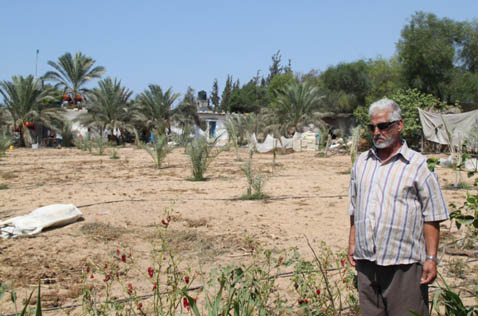Tag: Khan Younis
-
Farming with a grain of salt
22 December 2011 | Palestinian Center for Human Rights Farming on land that has become almost impossible to farm is now daily reality for 62 year old Naeem El Laham, also known as Abu Mohammed. Together with his wife, 6 sons, 5 daughters and grandchildren he lives on his farm west of Khan Yunis. “Our…
-
Israel’s killing zone in Gaza
6 January 2011 | The Electronic Intifada, Max Ajl Ahmed Qudaih was skinny, in blue Converse sneakers and a black leather jacket, his mustache oddly making him look younger, not older, than his 27 years. His voice was even, his face rigidly composed, like human stone, as we sat down with him in the martyr’s…
-
Civilian killed by Israeli military in Gaza
2 January 2010 | International Solidarity Movement, Gaza On Tuesday evening, December 28, 19-year-old Hassan Mohammed Qedeh was killed by the Israeli military in the village of Khoza’a, east of the southern Gaza city of Khan Younis. According to the Israeli forces, and subsequently repeated by various media outlets, he was a resistance fighter. However,…

